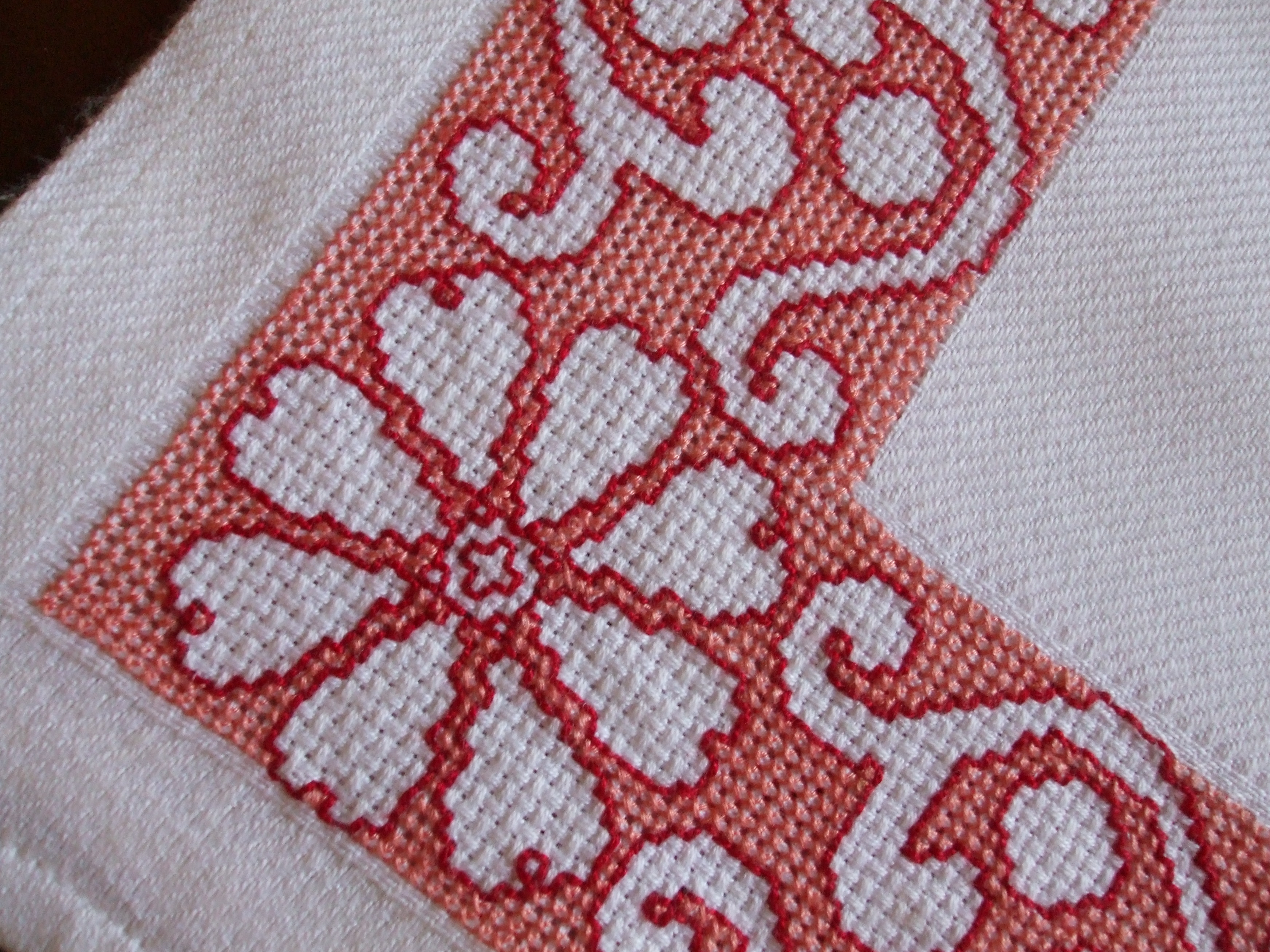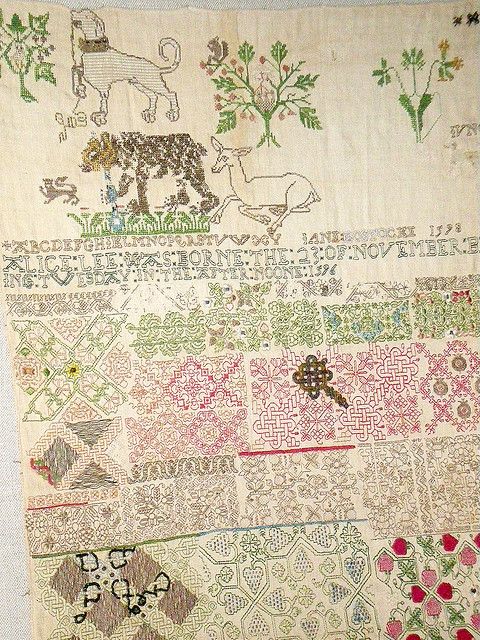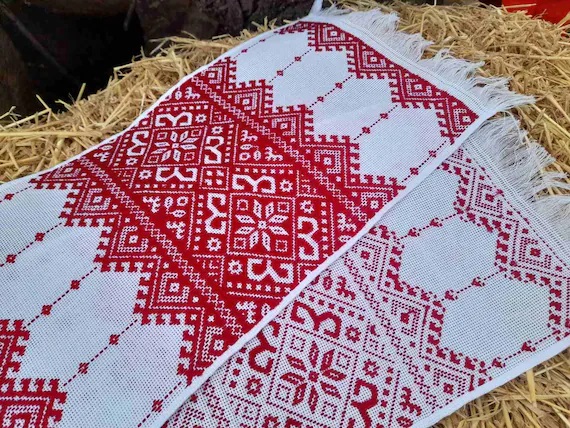In recent years, there has been a revival in the popularity of cross stitch, and around the world people are taking to this hobby as a way to express themselves. Looking at some of the amazing modern creations that people come up with these days, it can be hard to remember that this is an ancient craft form. Cross stitch is one of the oldest forms of hand embroidery and has roots around the globe, harking back to traditional ways of life in different cultures. Read more about different cross stitch traditions from around the world.
The Origins of Cross Stitch
There’s no definitive answer to the question of where cross stitch comes from, as different forms of embroidery have been popularized around the world for thousands of years. One of the earliest samples of embroidery was discovered in Egypt and dates to the 6th century, but there are also examples coming from China, Russia and other locations around the same era. Embroidery styles, and the introduction of designs which resemble cross stitch, have roots in many cultures.
Chinese Miao Embroidery

Cross stitching in China flourished during the Tang dynasty in China (618-906 AD) although different types of embroidery were practiced prior to this. Cross stitch has roots not only in the traditions of the Han Chinese, but also many ethnic minorities, such as the Miao tribe. The Miao people favoured a stitch called Satin Stitch, which gives a shimmering effect from the same colour threads used closely together. Looking at traditional Miao clothing, you can see how brightly decorated their garments are, from the stylized stripey skirts to the intricately embroidered bodices.
There’s a popular legend of a Miao female warrior who embroidered pictures on her clothing to record her people’s escape from the enemies who sought to kill them. At that time, the Miao didn’t have a written language to pass down their stories, so telling their tales through the art of embroidery was in ingenious way to preserve their history in their garments. Even in the modern day, the wedding dress of a Miao bride will be similarly decorated as a way of honouring her heritage. Girls learn to embroider from a young age and might spend several years making their wedding clothes.
Japanese Sashiko

Dating back to the Edo period (1615 – 1868), sashiko is a style of Japanese embroidery which originated with the peasant classes but has had a modern revival in the high fashion industry. Originally designed to repair tatty clothing and make garments that working people could use for longer, new pieces of cloth would be intricately stitched onto the old, often using repeated geometric patterns. The distinctive look of white thread on deep indigo fabric is easily recognisable.
Italian Assisi Embroidery

A type of embroidery that is closer to what we recognize as cross stitch is Assisi embroidery. This Italian art form is an example of counted-thread embroidery, and they use a technique called voiding, where the stitcher creates an outline of the motif they want to achieve, with the background filled in instead. The method renders the final image slightly more muted in vibrance than cross stitch from other location, but there is something refined about the clean, white simplicity of the design, with a background often in a pale blue, ochre yellow or a rusty red color.
Indian Banjara and Toda Embroidery
In India, traditional embroidery styles vary by region and also by the types of clothing people wore in those areas. Banjara embroidery is a mix of applique with mirrors and beadwork in bright colours, and cross stitch is used to highlight important motifs. Toda embroidery was used to adorn shawls, often with motifs of buffaloes, which are culturally important.
UK Cross Stitch Samplers and the Bayeux Tapestry
The Bayeux Tapestry is one of the best-known embroideries in the world, and while it is far from the earliest tapestry produced in Britain, this wall-hanging features many new stitches, such as the over stitch or cross stitch. According to legend, the tapestry was commissioned and created by Queen Matilda, wife of William the Conqueror, along with her ladies-in-waiting. However, another legend tells that it was produced by nuns at Barking Abbey, in Canterbury. The 70-meter-long tapestry depicts the events leading up to the Norman Conquest of England in 1066. As you might expect in a scene of this nature, the tapestry features over 600 male characters, but only three women. One of the most famous sections is the part that shows the death of King Harold.
In early example of traditional British cross stitch is the sampler. A sampler is a piece of cross stitch which serves the purpose of demonstrating a young girl’s skill, where she can show off different stitches. Most samplers include the alphabet to demonstrate the stitcher’s ability to form letters, or perhaps a bible quote, religious motif, elaborate border or other decorative flourishes.
The first known sample to come out of England was made by Jane Bostocke in 1598. This sampler was produced to celebrate the birth of Alice Lee, cousin of Bostocke, who had been born two years earlier. The work demonstrates a variety of patterns and motifs.

American Cross Stitch Samplers
The earliest known cross stitch sampler made in the United States was created by Loara Standish. She was daughter of Captain Myles Standish, a passenger on the Mayflower and one of the early pilgrims to the Americas. Created in 1653, Loara’s cross stitch demonstrates the Leviathan stitch, an intricate star-shaped design, and the sampler can be seen on display at Pilgrim Hall in Plymouth, Massachusetts.
Cross Stitch in Ukraine

No scientist can give an exact answer when Ukrainian cross-stitch was born. The only evidence of a venerable age is the use of embroidery to decorate clothes and household items during the Tripolye culture (5500 to 2750 BCE).
The art of embroidery was especially appreciated in the days of Kievan Rus' (9-13th centuries), when embroidery schools were opened for young girls.
In the 16-17th century, cross-stitch experienced a special flourishing, new techniques arose, which are still valuable for the present time.
Over the centuries, more and more new ornaments were born, a truly Ukrainian style was developed. Cross-stitching in Ukraine was not only a way of decorating clothes, ritual towels or household items. According to popular beliefs, such symbolic patterns were a powerful talisman.
Traditionally, embroidery was considered an exclusively feminine work. The ability to create filigree patterns with a cross on fabric was inherited from grandmother to mother, from mother to daughter.
Today, in many Ukrainian villages, there are still hereditary craftswomen who will acquaint with the peculiarities of national ornaments and teach the technique of cross-stitching.

